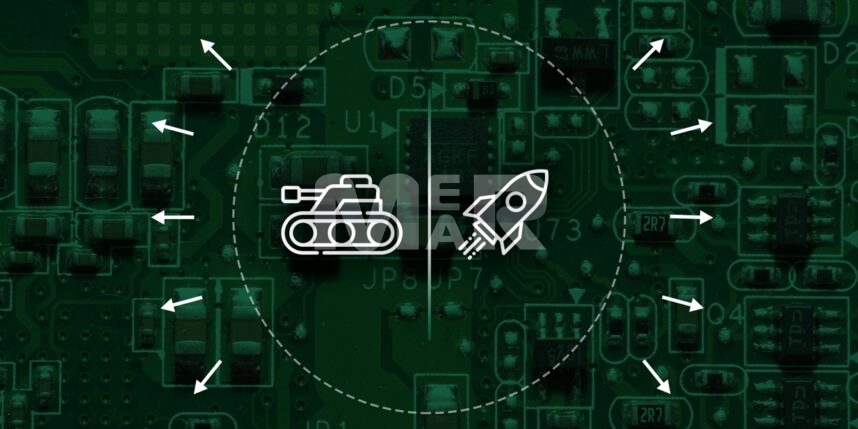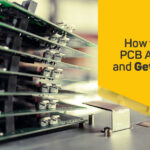Top Factors affecting Military and Aerospace PCB assembly process!

Military and Aerospace are the two industry sectors that require the most sophisticated electronic components and applications. PCB systems used in both these industry sectors need to deliver superior performance, reliability, and high precision as these are exposed to extreme and harsh environmental conditions and contaminants. To maintain high performance and ensuring zero downtime, these systems are mandated to adhere to IPC standards. Hence, PCB manufacturers have been committed to delivering PCB components with high precision and detail-oriented.
This is just the tip of the iceberg, there are many factors that have been influencing the PCB assembly process. Military and aerospace PCBs require special attention throughout the process of fabrication, design, assembly, and deployment.
Let’s get started to know more.
Before delving into the factors affecting military and aerospace applications, let us quickly see the industry applications of PCBs in both the military and aerospace sectors.
Military Industry Applications Using PCBs
PCB designs for military applications need to be mindful of the expectations like longer product lifecycles, extreme temperatures, and use cases. They are expected to be more robust, rugged, reliable than normal products. PCBs used in military applications also require strict design constraints.
- Defense navigation and communication systems
- Satellite subsystems using embedded processors
- Cyber counterintelligence systems
- Automatic search jamming systems
- Base protection and security
- Command and control systems
- Artillery and mortars
- Cryptanalysis systems
- Robotic systems
- Unmanned vehicles
- Ruggedized computers
Aerospace Industry Applications Using PCBs
- Digitalized signal and microwave processing systems
- Full Authority Digital Engine Control Systems (FADEC)
- Advanced Medium Range Air to Air Missiles (AMRAAM)
- Electronic flight instrumentation systems
- Central Air Data Computers (CADC)
- Satellite equipment
- Ground station applications
- Passive detection systems
Factors Affecting Military and Aerospace PCB Assembly Process
Nature of Construction Material
PCB assemblies used in both these industry sectors must be resistant enough to withstand high temperatures as aluminum and copper substrates which are high-temperature laminates are used in PCBs for military and aerospace applications. Of late, anodized aluminum is also used to minimize the heat-induced oxidation effects. These varied aluminum substrates when used in conjunction with thermally conductive pre-pegs are known to offer weight benefits.
Avoid Thermal Dissipation
Did you ever notice some components on your PCB dissipating heat in high proportions? Quite often, isn’t it? This heat would damage the PCBs unless dissipation is controlled. you can mount the components about 20 MILs from the board surface. Alternatively, you can also use a spacer between the component and the heat sink which provides an adequate clearance to protect the PCB components and surface. These strategies are successful in controlling heat dissipation in military and aerospace PCBs. This, in turn, increases the reliability aspect of the PCB.
Reduction of EMI and Attenuation
Have you ever wondered why we dip a stranded wire into the hot melted solder during the PCBA for military and aerospace applications? It is left to dry and then solidified for achieving tensile strength. In this process, a stranded wire is transforming into a solid wire with the elimination of air gaps to facilitate stable air flows. This entire process improves the reliability of military and aerospace PCBs while reducing the impacts of Electromagnetic interference (EMI) and attenuation.
Conformal Coating and Surface Finish
The very nature of military and aerospace applications is that they are subjected to harsh environmental conditions like constant exposure to moisture, extreme temperature, humidity, and water. So, to safeguard the PCB components, your applications go through the appropriate conformal coating. Usually, acid-based sprays are used for this purpose, but there are other types of surface finishing and coating as well like HASL, ENIG, immersion silver, etc.
Lead-free PCBs
Lead alloys usually melt at low temperatures that cause damage to electronic components during the assembly process. However, lead is known for its reliability. So, some military applications still use lead-based PCBs. But things have started to change, many electronic manufacturers have been making a switch to lead-free PCBs owing to the damage concerns, harmful effects on human health as well as environmental concerns.
Minimize Vibrations
While durability, reliability, and strength form the cardinal principles of military and aerospace applications. PCB manufacturers should be able to minimize vibrations while mounting the components. Through-hole technology is hence considered to be the best way of mounting during the PCB Assembly process as PCBs manufactured through THT are considered to be extremely durable.
Extra Cushioning
PCBs that are used in military and aerospace applications must use mil-spec components that have tighter tolerances of 1 to 2%. This is because, quite often, PCB designs in military circuitry get a high current flow that is beyond commercial grade circuitry. You need to add an extra cushion to make sure that the products or applications do not fail under any extreme conditions. This extra cushion is to augment strength and efficiency.
Other Design Considerations
Also, follow the design considerations to meet IPC standards.
- Design the PCBs that can handle the maximum power load.
- Differentiate low-frequency components from high-frequency to lower the impact of the waveforms produced by the high-frequency components on the low-frequency ones as these may disrupt the signal quality by unnecessary noise which is a big NO for military and aerospace applications.
- Shield the clock signals and keep them clean by resorting to physical shielding using some material enclosures such as aluminum ones.
- Use thermal compounds when you need heat dissipation.
- Increase clearance space when you are mounting the high heat-producing components to protect the nearby components and PCBs from over-heating.
- Pre-tin the braided and stranded wires for improved solderability.
- Use high-quality heat-resistant materials to make the metallic core components withstand high temperatures.
- Use finishing materials like an electrolytic nickel with Immersion gold coating (ENIG), lead-free HASL, Immersion silver, electrolytic nickel, and gold, etc. to support the PCBs to withstand harsh environmental conditions.
- Acrylic-based sprays should be used in conformal coating for protecting the PCBs
- For smooth power transmission through the circuit, maintain PCB routings at 45-degree or lesser angles.
- High-quality simulation programs should be used to verify the loads at varied locations to understand any PCB design alterations to be made.
- Make sure the PCB components manufactured for military and aerospace comply with – Performance standards – MIL-PRF-38534, MIL-PRF-38535, MIL-PRF-55342, MIL-PRF-55681, and MIL-PRF-123, MIL-PRF-50884, MIL-PRF-55110, and MIL-PRF-31032 – Testing standards – MIL-PRF-19500, MIL-STD-883, MIL-STD-750-2, MIL-STD-202G
- Solder the press-fit components to avoid vibrations
- You can avoid component damages by rechecking the thermal profiles for the wave and reflow the soldering process.
- Understand how your PCB works in real-time through pre-layout simulations.
Conclusion
If you want to have a highly curated PCB assembly process, then we recommend you to get them sourced from a certified manufacturer. Mermar electronics provide PCB assemblies for diverse industry sectors including military and aerospace. We ensure utmost-precision and high-performance PCB assembly services to meet the exact specifications for these industries.
Mermar electronics has successfully earned and maintained its ITAR certification. Mermar Electronics is your one-stop solution for Aerospace Electronics services from PCB Prototyping, PCB Assembly, PCB Fabrication, Quick Turn PCB Assembly, Cable Harness Assembly, SMT PCB Assembly, Low Volume PCB Assembly, High Volume PCB Assembly, Full and Partial Turnkey Assembly, Electromechanical Assembly, Multilayer PCB Assembly, PCBA Rework and all the way to Box Build Assembly. All Our PCB assemblies are proudly made in USA. Get in touch with us today to see how we can assist with your next project.
Get quick quote for PCB Assembly!








